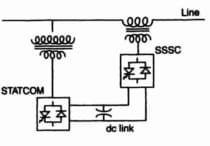Dielectric strength and Breakdown MCQ
1. What is the approximate breakdown strength of atmospheric air at N.T.P ?
a. 0.3 kV/cm
b. 1.0 kV/cm
c. 3 kV/cm
d. 30 kV/cm
2. The dielectric strength of air under normal condition is about________.
a. 21.1 kV/cm
b. 30 kV/cm
c. 100 kV/cm
d. 200 kV/cm
3. Disruptive corona begins in smooth cylindrical conductors in air at NTP if the electric field intensity at the conductor surface goes up to_______.
a. 21.1 kV(rms)/cm
b. 21.1 kV(peak)/cm
c. 21.1 kV(average)/cm
d. 21.1 kV(rms)/m
4. The dielectric strength of air is_________.
a. Proportional to barometric pressure
b. Proportional to absolute temperature
c. Inversely proportional to barometric pressure
d. None of the above
5. Visual critical voltage is________.
a. Lower than disruptive critical voltage
b. Higher than disruptive critical voltage
c. Equal to critical voltage
d. None of the above
6. Critical voltage limit of a transmission line is increased by_________.
a. Increasing the radius of the conductors
b. Increasing the spacing between conductors
c. Reducing the spacing between conductors
d. Reducing the radius of the conductors
7. The maximum permissible value of fair weather corona loss for a HV line is_______.
a. 0.6 kW/3-phase km
b. 1.2 kW/3-phase km
c. 0.3 kW/3-phase km
d. 2.4 kW/3-phase km
b. Smooth conductor is used
c. Sharp points are provided in the line hardware
c. 1.13
d. 1.2
10. Corona loss can be reduced by using________.
a. Solid conductor of diameter 'd'
b. Hollow conductor of diameter 'd+δd'
c. Bundle conductor
d. Both (a) and (b)
e. Both (b) and (c)
d. Resistance, inductance,
capacitance and shunt conductance
Skin effect in transmission MCQ
12. Skin effect depends upon_______.
a. Cross-section of conductor
b. Supply frequency
c. Permeability of conductor material
d. All of the above
d. Both (a) and (b)
c. Current is uniformly
distributed in the x-section of the conductor
15. When an alternating current flows through a conductor_______.
a. Entire current passes through the core of the conductor
b. Current remains uniformly distributed over the whole x-section of the conductor
c. Portion of conductor near the surface carries less current in comparison to core
d. Portion of conductor near
the surface carries more current in comparison to the core
a. Skin effect
b. Corona
c. Increase line resistance
d. Decrease series reactance
18. Skin effect exists in_______.
a. cable carrying dc current
b. dc transmission line only
c. ac transmission line only
d. dc as well as ac transmission lines
19. Skin effect in a conductor becomes more pronounced_______.
a. At higher frequency
b. At lower frequency
c. At dc
20. The skin effect in conductor results in________.
a. Increase in its dc resistance
b. Decrease in its ac resistance
c. Increase in its ac resistance
a. Increases the effective resistance and effective internal reactance
b. Reduces the effective resistance and effective internal reactance
c. Increases the effective
resistance but reduces the effective internal reactance
d. Reduces the effective resistance but increases the effective internal reactance
22. The skin effect of a conductor reduces with the increase in________.
a. Resistivity of the
conductor material
b. x-section of conductor
c. Supply frequency
d. Permeability of conductor material
23. Skin effect in conductor is proportional to_________.
a. (Diameter of conductor)1/2
b. Diameter of conductor
c. (Diameter of
conductor)2
d. (Diameter of conductor)4
24. In order to reduce the skin effect at UHF________.
a. Anodised conductors are used
b. Copper rods with silver plating are used
c. Painted conductors are saved
d. Copper tubes with silver plating are used
25. A 100 km long transmission line is loaded at 110 kV. If the loss of line is 15 MW and the load is 150 MVA, the resistance of the line is_______.
a. 0.0806 ohms per phase
b. 0.806 ohms per phase
c. 8.06 ohms per phase
d. 80.6 ohms per phase





0 Comments
If you have any doubt, feel free to ask.